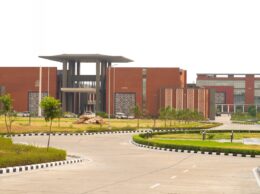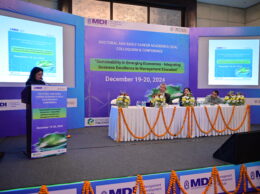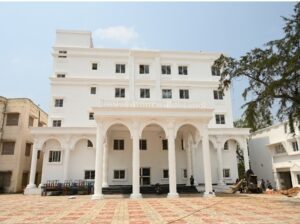VARANASI : A study by BHU researchers has concluded that the lower Ganga basin could experience agricultural drought in near future due to decreasing areal mean rainfall. The study has been carried out by Prof. R. K. Mall and Ph.D. scholar Pawan Kumar Chaubey, from the DST-Mahamana Centre of Excellence in Climate Change Research (DST-MCECCR) at the Institute of Environment and Sustainable Development of the university. The study explored the new possible hotspot regions for future urban flooding due to the increasing pattern of heavy rainfall. It also calls for timely efforts by policymakers to manage the excess (less) water situations.
Prof. R K Mall said, “Global warming increases the risk of Hydro-climate extremes such as floods and droughts worldwide. The increasing rate of atmospheric heat increases the water content, which is the leading cause of extreme events. The widespread variability in extreme events has affected man-made and natural systems.” The study shows the changes in the hydroclimate extremes under low to high-emission scenarios of the 12 best models of Coupled Model Intercomparison Project Phase 6 (CMIP6) climate model, he added.
The Study found that the frequency of extreme rainfall is expected to increase over the Western Ghats and Northeast river basins, while an increase in heavy rainfall intensity (14.3%) is projected over the upper Ganga and Indus basin. Also, approximately 4%–10% of the heavy rainfall is projected to increase over the western part of Indian River basins during the near (2021–2040) and mid (2041–2060) future. Due to the intensification of extreme rainfall, Western Ghats, Indus, West, and Central Indian River basins will be highly vulnerable. Major cities like Mumbai and Pune, situated in the west-flowing river basins, would be at a high risk of urban flooding due to the increasing future precipitation extremes.
The lower Ganga river basin is found to experience a decrease in monthly mean precipitation of approximately 7 to 11 mm/day in the near future. India’s Eastern Ghats river basins were found to have decreased approximately 20% in daily precipitation, however, in the far future, it is projected to increase approximately 15%.
The results show that changes in the frequency of heavy rainfall are expected to be more over the IRBs. In addition, the research also identifies the major hotspots of highly populated cities that come under different river basins for urban flooding, which could help policymakers in designing appropriate adaptation and mitigation strategies.
The research team used high-resolution CMIP6 Climate model to examine the future hydro climate extremes over the different River Basins of India. This model uses various meteorological and environmental parameters to make projections about climate in the future. The work has been supported under the Climate Change Program of the Department of Science & Technology, Government of India. The findings of the study have been published in the internationally renowned journal Earth’s Future by the American Geophysical Union (AGU).









